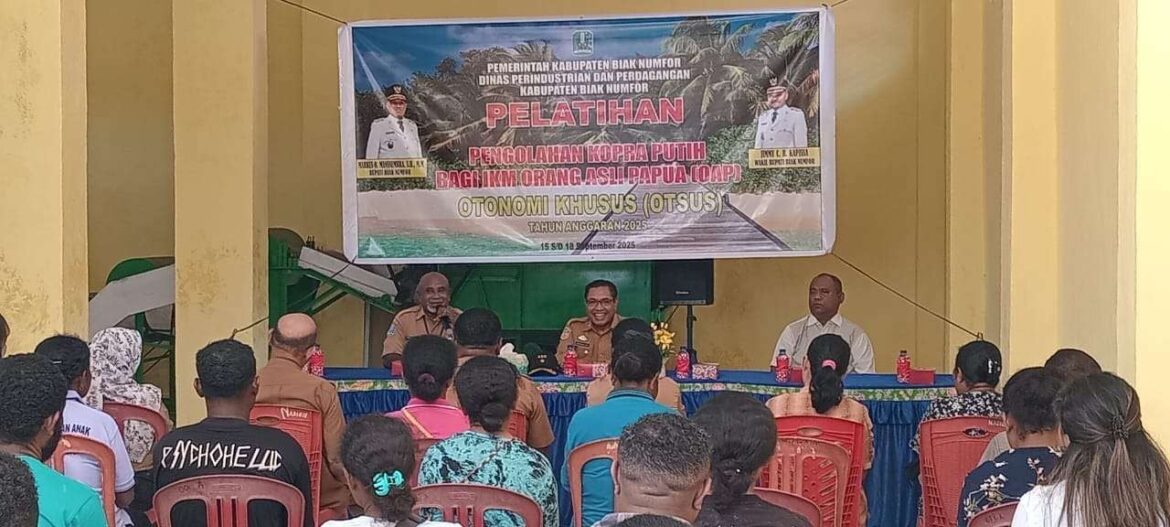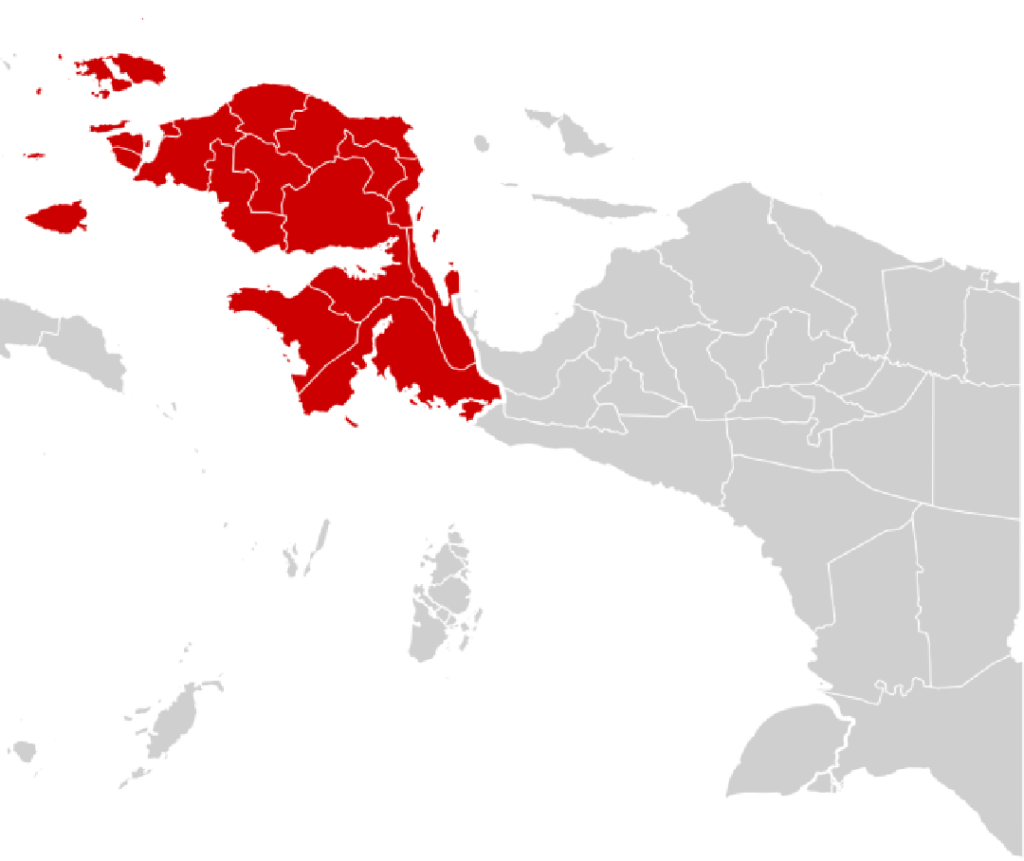The coastal winds whisper through the swaying coconut palms of Biak Numfor, a regency nestled in the far-eastern reaches of Indonesia. Here, on the sun-drenched islands of Papua, coconuts are more than a fruit—they are a symbol of sustenance, survival, and now, opportunity.
In a groundbreaking move towards economic empowerment and sustainable local development, the Government of Biak Numfor Regency has launched a targeted initiative to train 30 Indigenous Papuans—known locally as Orang Asli Papua (OAP)—in the processing of white kopra, a premium-quality coconut product with significant domestic and international demand.
But this is more than a simple skills-training project. It’s a story of resilience, rediscovery, and reclaiming agency over local resources in a region that has long stood at the crossroads of tradition and transformation.
A New Chapter in Coconut Processing
For decades, communities across Biak Numfor have depended on coconut farming as a primary source of income. Traditionally, coconuts are harvested, dried, and turned into regular “brown” kopra—a product used to extract coconut oil. However, this method often yields low profits due to quality degradation, poor drying techniques, and inconsistent market access.
Enter white kopra—a refined form of dried coconut meat, processed using cleaner, more hygienic methods that preserve its bright, ivory-white appearance. Unlike traditional kopra, white kopra is considered premium-grade, fetching higher prices and appealing to health-conscious markets.
Recognizing the potential of this value-added product, the Department of Industry and Trade (Disperindag) of Biak Numfor has stepped in to shift the paradigm. With targeted support from the regency government, they have facilitated hands-on training programs for local residents to not only produce white copra but also understand the science, market potential, and health benefits behind it.
Training with Purpose: Knowledge Meets Culture
The training took place in Biak City, with participants selected from several indigenous communities. Over several days, these men and women—many of whom had never received formal vocational instruction before—were introduced to the fundamentals of white kopra processing.
Participants learned how to:
- Select mature, high-quality coconuts.
- Split and dry them in sanitary conditions, ensuring low moisture content.
- Avoid smoke contamination, often a problem in traditional processing.
- Store the dried product in clean environments.
- Package and label their product for potential commercial sales
Local instructors ensured that the sessions were tailored to the specific geographical and cultural context of Papua. The focus was on simple, replicable methods that could be sustained even in remote villages—using sun-drying racks, naturally ventilated shelters, and traditional tools upgraded with minimal technology.
But perhaps most impactful was the integration of cultural respect. Elders were consulted. Local languages were used in explanations. And throughout the program, there was an emphasis on economic sovereignty—enabling OAP families to control their own resources and futures.
Education Joins the Movement
The white kopra training didn’t stop with adults. The government, in collaboration with State’s Vocational High School (SMKN) 3 Kemaritiman Biak—a maritime vocational school in the region—extended the program to students as well.
This forward-thinking move ensures that vocational education is closely linked to local industry opportunities. By involving youth, the initiative is planting seeds for a sustainable future. Students not only learned the theory behind coconut processing and supply chains but were also encouraged to design their own business models and community co-ops based on white copra.
“Learning about white copra helps me see how we can build something for our families without having to leave the island,” said one student, beaming as he showed his cleanly cut, sun-dried coconut slices ready for packaging.
The Economic Promise of White Kopra
One of the most promising outcomes of this initiative is the potential economic upliftment for indigenous households. Traditionally, brown copra sells for a lower price due to its poorer quality and higher moisture content, often leading to rejection or lower bids from buyers.
White copra, on the other hand, can command significantly higher market prices due to:
- Better oil yield
- Cleaner, food-grade appearance
- Compliance with export standards
- Perceived health benefits
According to the training facilitators, well-processed white copra could increase a farmer’s income by 20–30% or more, depending on market access. That’s a game-changer in rural Papua, where access to reliable income remains a major challenge.
Already, some participants have reported increased demand from local cooperatives and traders impressed with the quality of the newly processed product.
More Than a Product: The Health and Wellness Connection
In a unique twist, white kopra is being promoted locally not just as an economic product but as a health asset. Based on some researchs, white copra is believed to have properties that support fat metabolism and brain health—a claim that, while anecdotal, is rooted in the nutritional richness of coconuts, especially medium-chain triglycerides (MCTs).
While further scientific validation is needed, these claims are helping boost consumer interest and, more importantly, local pride in traditional resources that support both body and economy.
The Biak Numfor government is careful to frame these benefits within responsible messaging—avoiding exaggerated health claims while highlighting the natural advantages of clean, chemical-free coconut products from the region.
Challenges on the Path Ahead
Of course, turning a rural community into a center for premium white kopra production doesn’t come without challenges. Some of the key obstacles include:
- Climate dependency: Sun-drying is weather-sensitive; the region’s tropical rainfall patterns may disrupt production unless covered drying facilities are built.
- Lack of capital: Initial investment in clean processing equipment or drying racks can be a barrier for smallholder farmers.
- Market connectivity: While demand is growing, connecting producers in Biak Numfor with premium buyers across Indonesia—or even abroad—requires logistics, branding, and certification support.
- Quality consistency: White kopra standards must be maintained batch after batch to build buyer trust.
- Sustainability: Avoiding overexploitation of coconut trees, managing organic waste, and maintaining soil health are all essential for long-term production.
These are not insurmountable problems, but they require coordinated policy responses and ongoing technical assistance to avoid short-term success turning into long-term stagnation.
A Vision for Local Autonomy
In the eyes of Bupati Biak Numfor, Herry Ario Naap, and local Disperindag officials, the white kopra initiative is about more than economics. It’s a symbol of autonomy.
“The people of Papua must not just be spectators to development,” he said in a public address. “They must be at the center of it—producing, leading, and benefiting from it.”
Indeed, the narrative is shifting. No longer is Biak Numfor merely a source of raw materials for extraction. It is becoming a case study in grassroots industry development, where culture meets commerce and where indigenous knowledge is amplified, not erased.
Looking Forward: Scaling and Impact
The 30 OAP participants in this initial batch are only the beginning. The Biak Numfor government plans to scale the initiative to include more villages, women’s groups, and even diaspora communities.
There are also plans to:
- Establish cooperative processing centers
- Offer microfinance to white kopra entrepreneurs
- Provide certification and branding support for Biak white copra
- Explore export potential, particularly to health-conscious markets in Asia and Europe.
- Collaborate with research institutions to study product quality and health claims.
If successful, the white copra initiative could inspire similar programs across other regencies in Papua—turning one island’s story into a national model for sustainable rural transformation.
Conclusion
What’s unfolding in Biak Numfor is not merely a vocational training program. It is a quiet revolution—one coconut at a time.
Through the simple act of drying coconut flesh with care and knowledge, families are changing their income trajectories. Students are envisioning futures on their own land. Communities are reclaiming the narrative of productivity. And an entire region is slowly but surely turning its natural abundance into generational wealth—without sacrificing identity.
White copra may be a product. But in Biak Numfor, it’s becoming something far more powerful: a symbol of hope.


